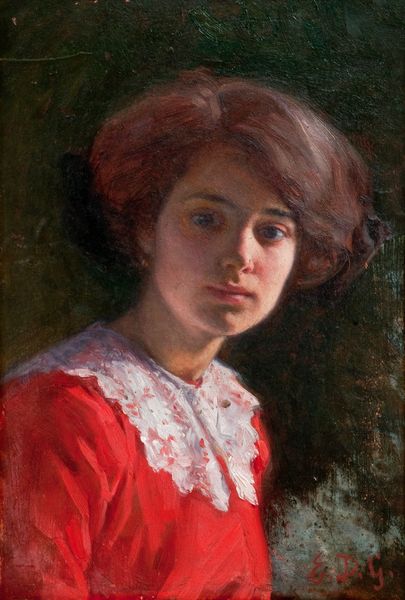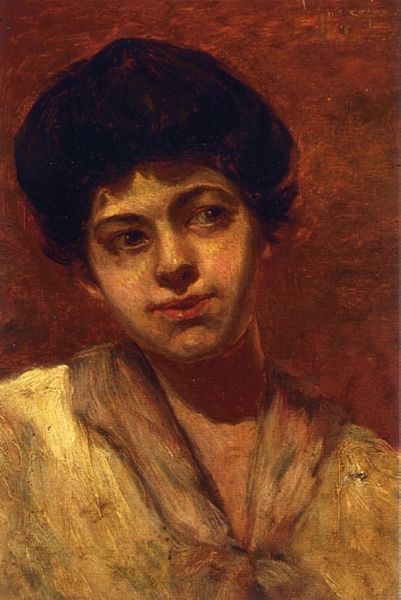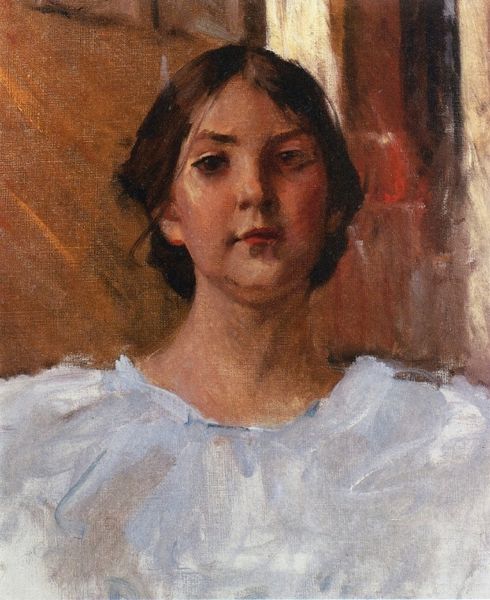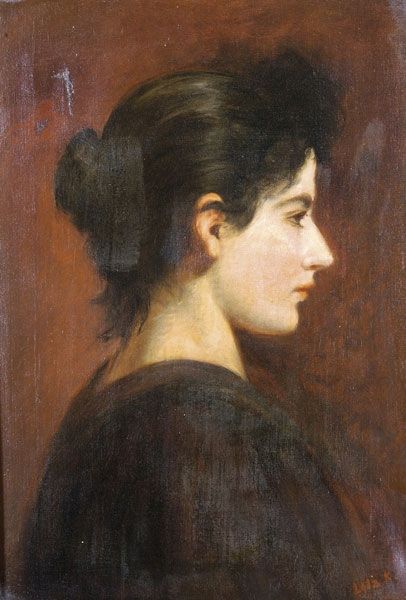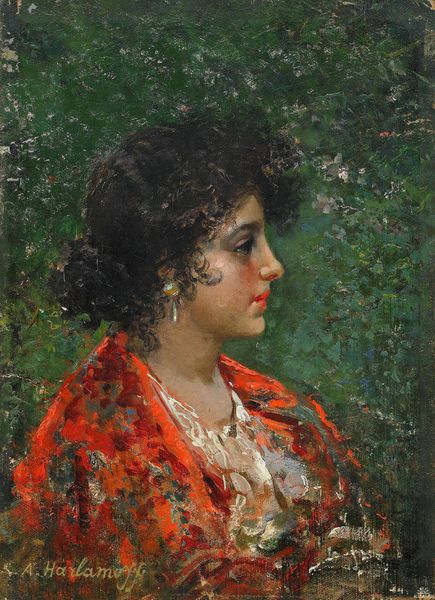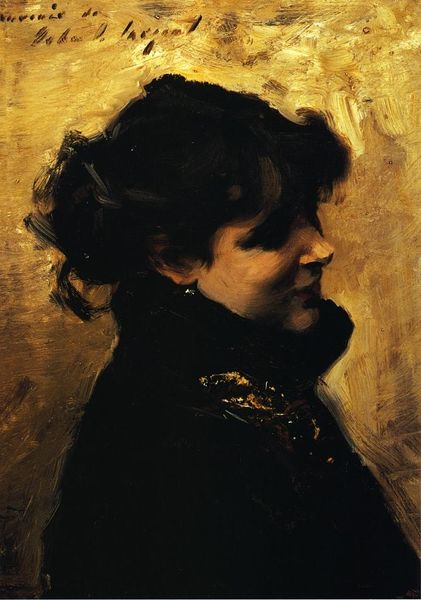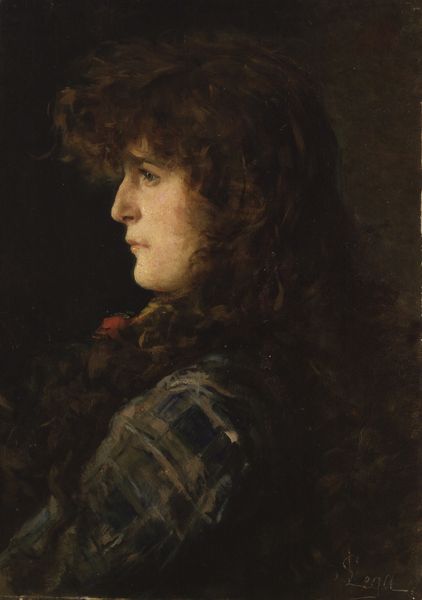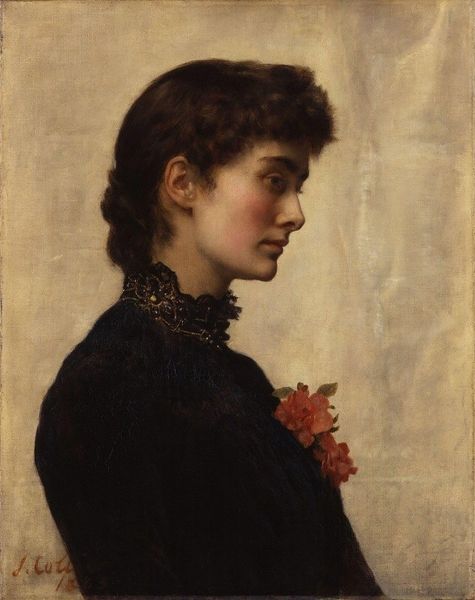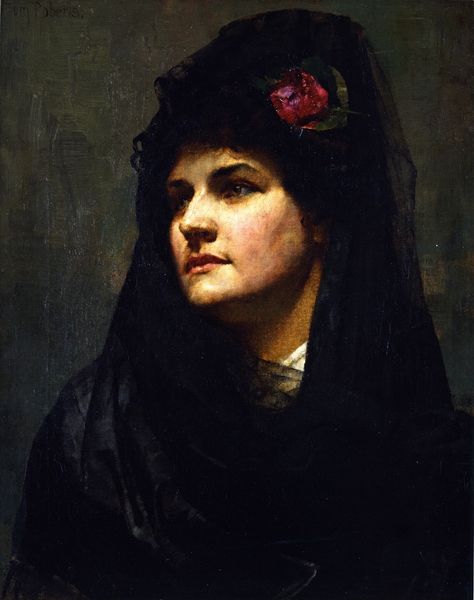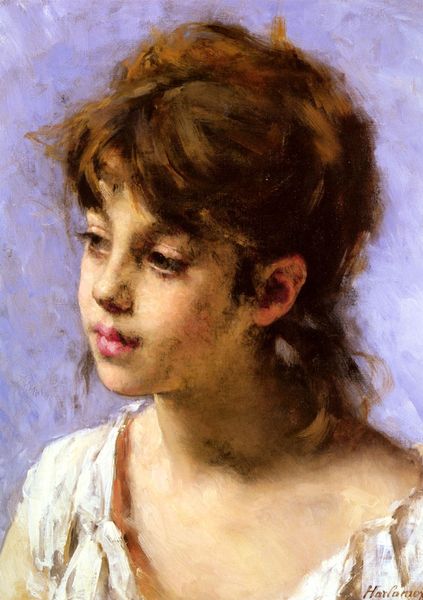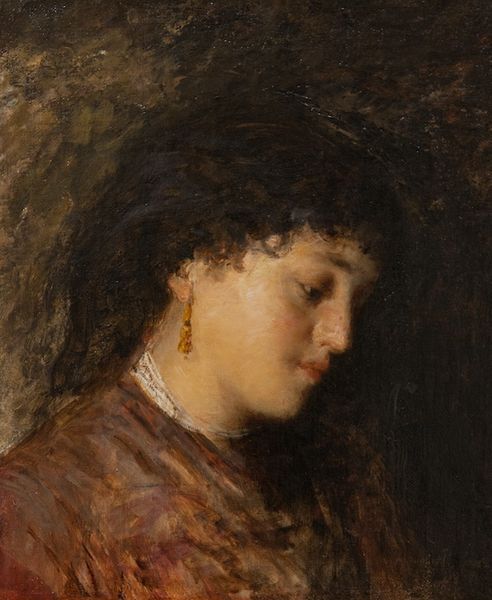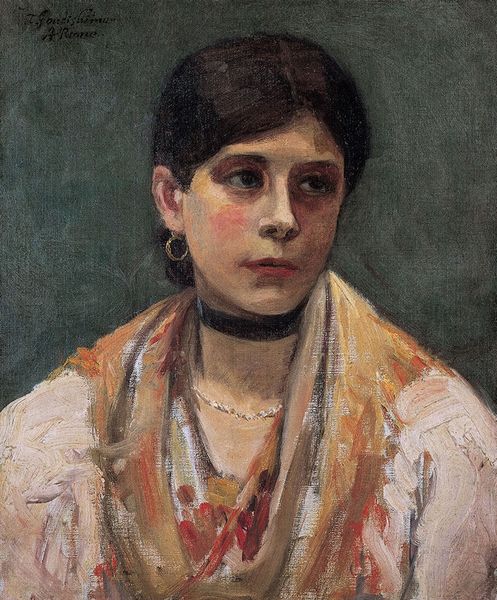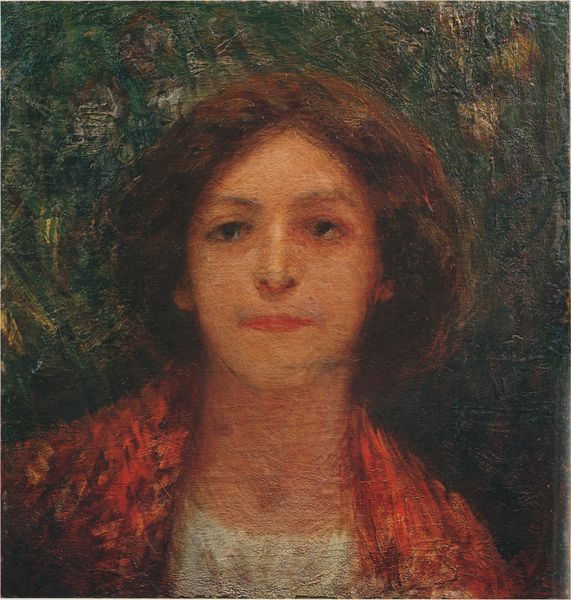
painting, oil-paint
#
portrait
#
painting
#
impressionism
#
oil-paint
#
oil painting
#
neo expressionist
#
realism
Dimensions: 46 x 36 cm
Copyright: Public domain
Curator: Here we have Noè Bordignon’s "Portrait of a Young Girl" from 1885, an oil painting rendering the subject in profile. Editor: My first thought is how modern it feels. Despite the clear historic context, the application of paint gives it this incredibly fresh feel. It’s also small, isn’t it? That intimate scale draws you in. Curator: Absolutely. What's interesting here is how Bordignon plays with both Realist and Impressionist techniques. While the girl’s features are rendered with considerable realism, the background and the details of her clothing become a flurry of strokes and colours, softening her place within this… this, world we’re given. Editor: Yes, that interplay of sharp and soft... the tangible flesh and bone offset by an ephemeral garment and dissolving space. How much time do you think Bordignon invested in those details? The background in particular feels quickly, intuitively laid down. Were they capturing a likeness or creating a feeling? Or both? Curator: Perhaps both, but it raises questions about how young women were viewed and visually consumed during this era. This portrait’s informality seems to resist the established modes of objectification so prominent in late 19th-century art, providing a space for something less didactic in terms of visual politics, right? It offers the sitter agency, a chance to simply exist in her subjectivity. Editor: Her agency, or perhaps a new method for selling desire. But regardless of gender and gendered art practices, look at how materiality dictates form. Note the textures. It appears that there might be evidence of previous scrapped attempts, you know, layering that peeks through. It demonstrates labor and it reflects his process: thought and struggle and progress, even those underlayers were steps on the road towards the portrait we now admire. Curator: True. This speaks to something greater than the singular image on view, placing value on practice, labor, and method as it impacts meaning... that’s a very valid observation! It asks us to think critically about artistic conventions as representations of social power. Editor: Exactly. The piece reminds us to remain attuned to both the final creation and how that creation was manifested through an artistic process, with labour and intent combined, and… voilà. Curator: And voilà, we're reminded that these paintings exist both as material objects and documents of complex historical, cultural, and political encounters. Editor: Agreed, this tension is so potent—I find I am returning again to the method in oil paint itself!
Comments
No comments
Be the first to comment and join the conversation on the ultimate creative platform.
